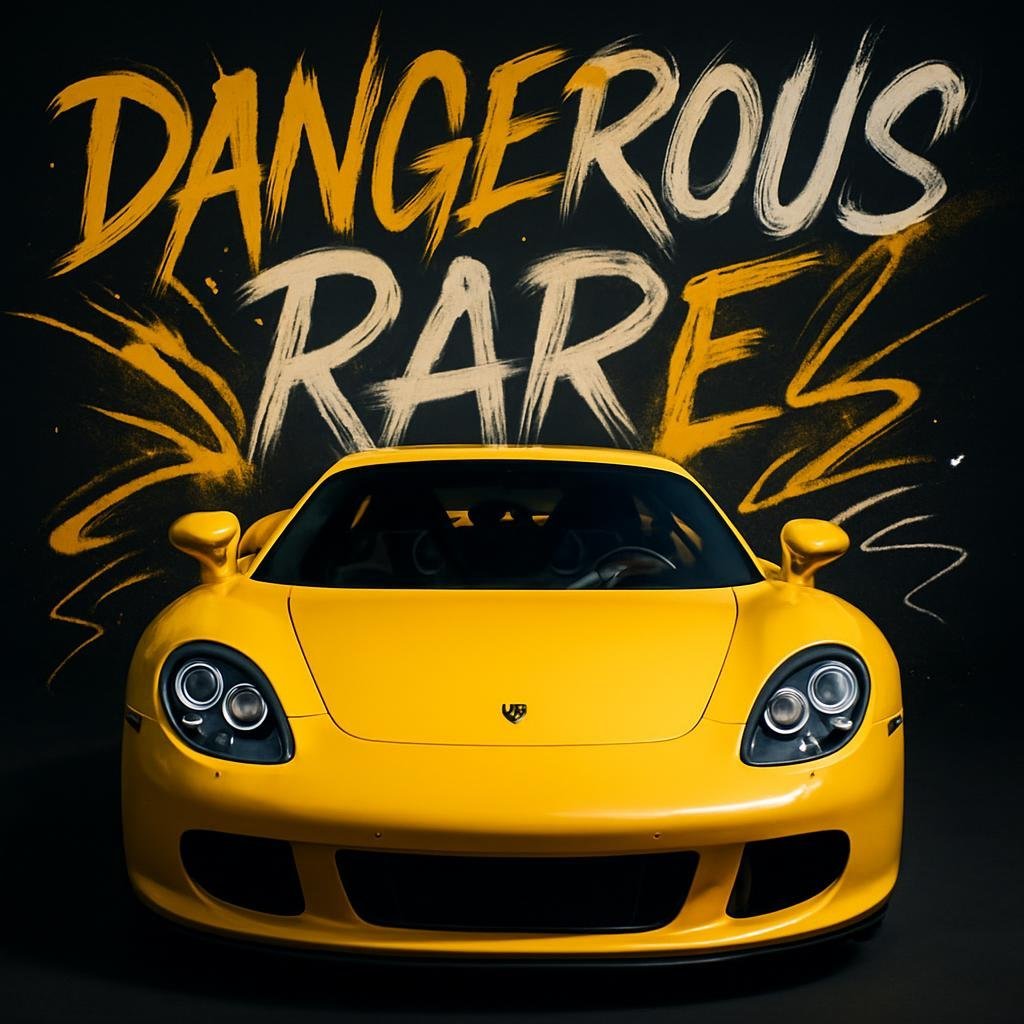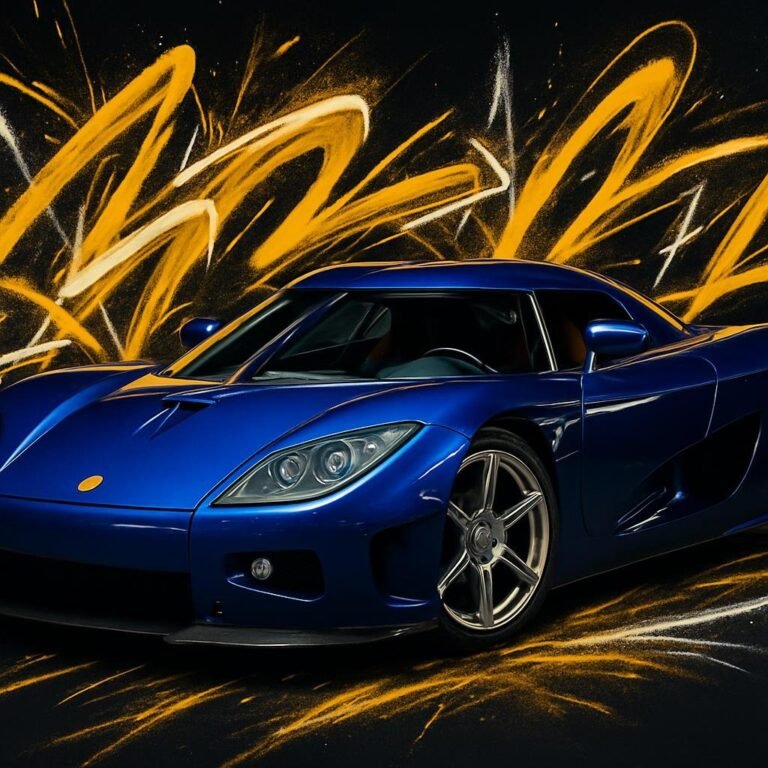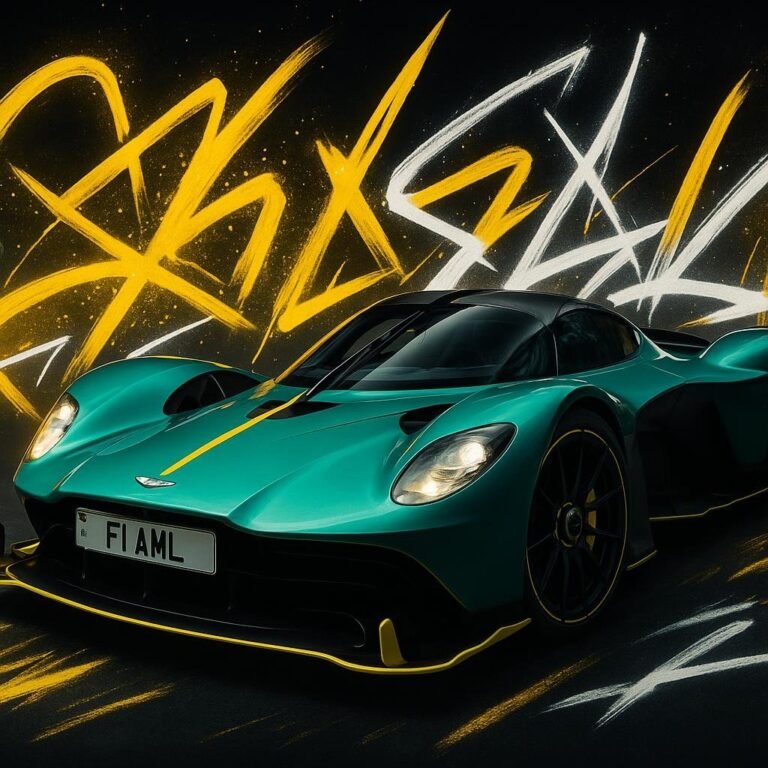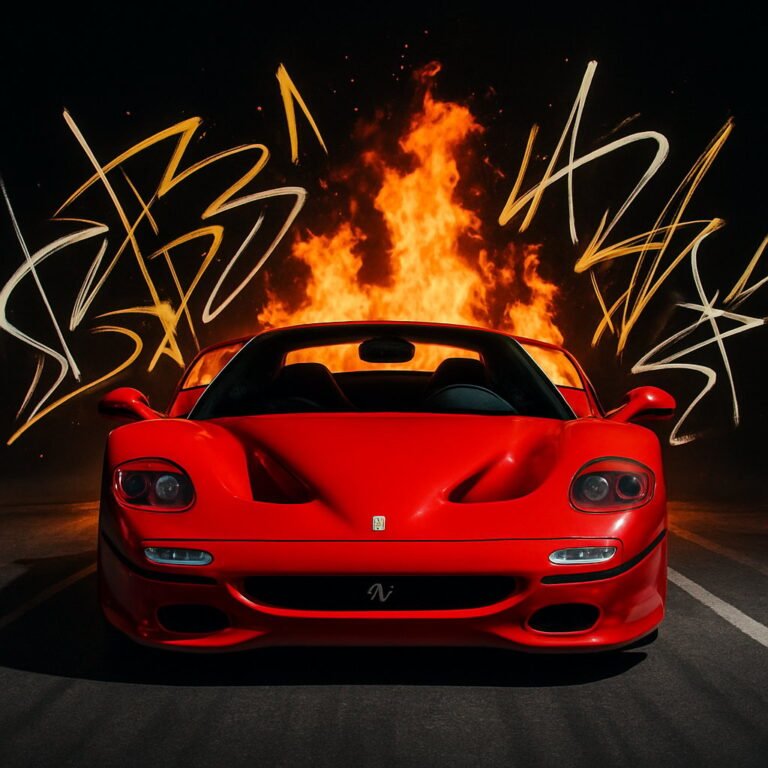The Porsche Carrera GT stands as one of those rare supercars that somehow feel both mythical and mechanical. Born from the ashes of a cancelled Le Mans racing dream, it transformed into a road-going beast and wowed the world at the 2000 Paris Motor Show.
This analog supercar is a last-of-its-kind rebel—naturally aspirated V10, manual gearbox, and zero electronic safety nets. It’s raw, loud, and demanding, with a spirit that bites back if you’re not paying attention.
But what actually makes the Carrera GT tick? Its appeal runs deeper than just numbers or lap times.
This car introduced one of the first production cars with a carbon-fibre reinforced plastic subframe. That’s not just a flex—it changed the game, and other automakers soon followed suit.
Between 2004 and 2007, Porsche built only 1,270 Carrera GTs. That’s a tiny number, and it’s why owning one feels like joining a secret society of purists who crave a pure, analog driving experience.
From a team of racing engineers to its current cult status as a performance benchmark, the Porsche Carrera GT story is one of wild ambition. It’s become a legend—arguably the last analogue supercar from Porsche, and it now sits alongside icons like the Ferrari Enzo and McLaren F1.
Backstory and Development
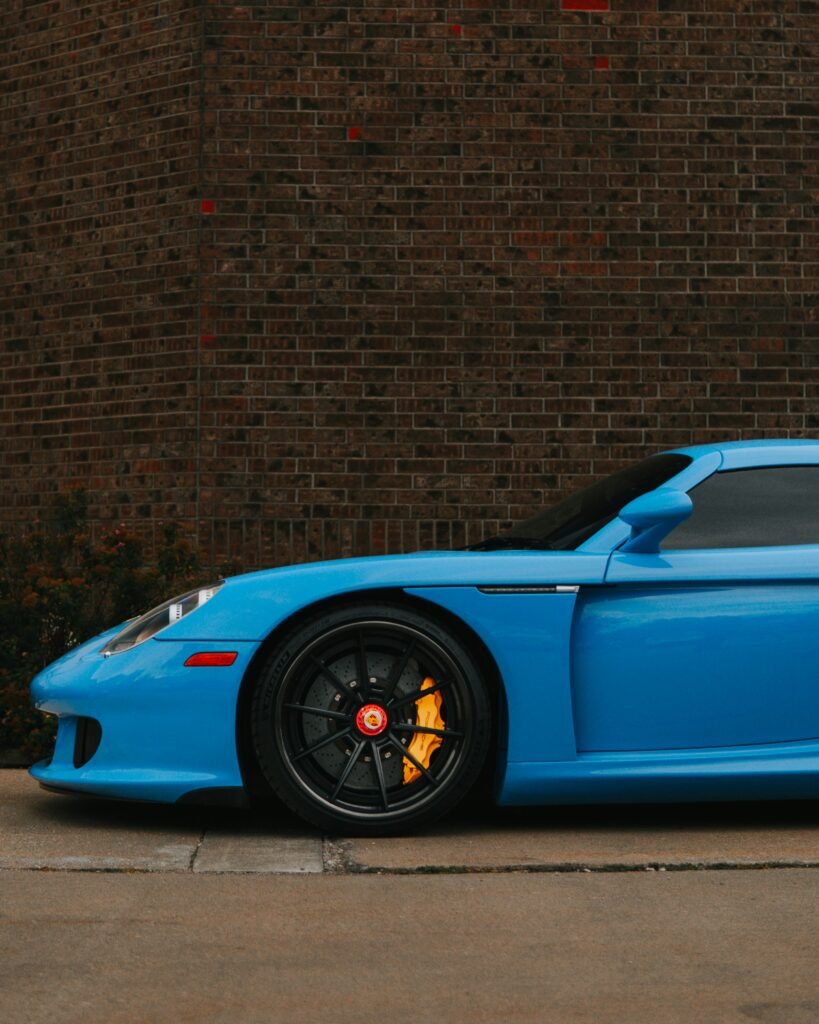
The Porsche Carrera GT’s origins are tangled up in racing heartbreak and second chances. Porsche’s LMP 2000 Le Mans Prototype program was cancelled, but from that disappointment, the company’s wildest supercar emerged.
Porsche revealed this automotive masterpiece at the 2000 Paris Motor Show. That moment didn’t just change Porsche—it kind of shook the whole supercar world.
Motivation Behind the Porsche Carrera GT
Porsche leadership wanted a flagship supercar to show off their engineering chops. When their F1 dream died, they had all this high-tech hardware with nowhere to go.
The company saw a chance to bridge their race cars and showroom models. They wanted to prove they could go toe-to-toe with Ferrari and the rest.
They also craved a car that put the driver first—no electronic nannies, just skill and nerve. The Carrera GT design was all about that analog connection.
Once the board realized a “halo car” could boost the whole brand, the project got the green light. Suddenly, the Carrera GT wasn’t just a dream—it was a mission.
Inspiration From Motorsport and Racing Heritage
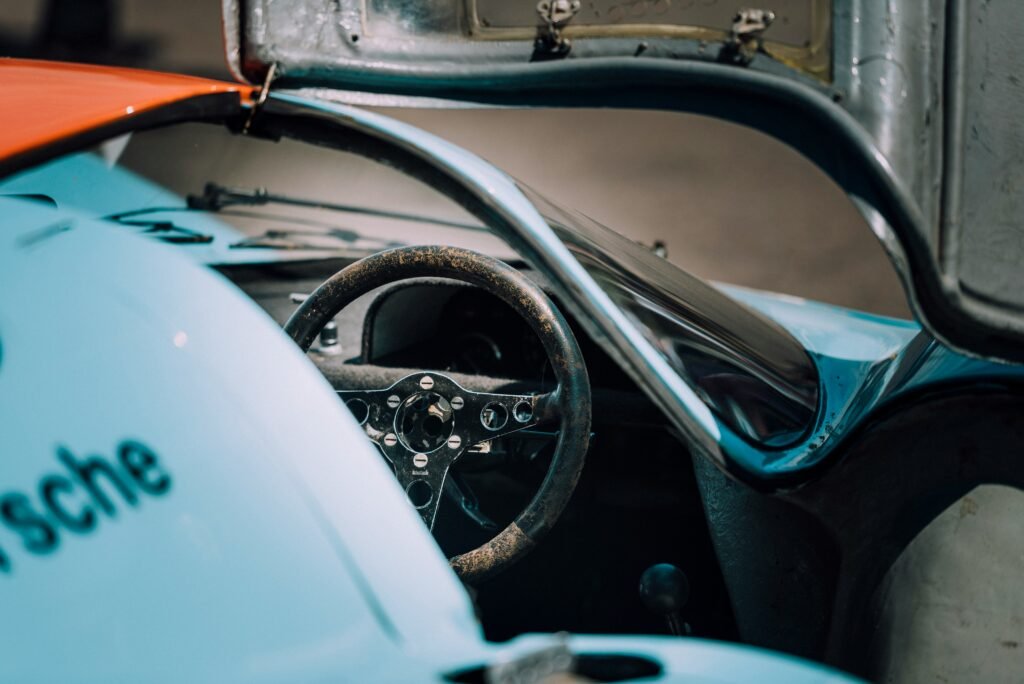
The Carrera GT’s DNA comes straight from the canceled LMP 2000 Le Mans prototype. That V10 engine? It was meant to scream down the Mulsanne Straight, not cruise city streets.
Porsche engineers grabbed racing chassis and suspension tech, then adapted it for the road. The carbon fiber monocoque came right out of motorsport playbooks.
Every part was scrutinized for weight and aero—comfort was an afterthought. Porsche wanted a machine that felt alive, not cushy.
Rally legend Walter Röhrl took the wheel during development, pushing the car to its limits and shaping its wild handling.
Even the ceramic composite clutch was swiped from racing. This tech would eventually trickle down to other Porsche sports cars.
Debut at the Paris Motor Show
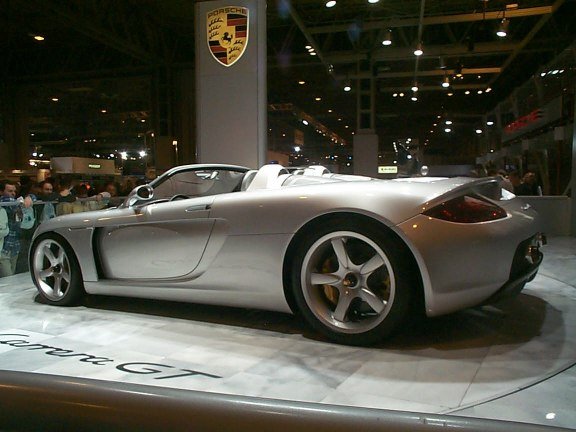
The Carrera GT concept made jaws drop at its 2000 Paris Motor Show debut. Even as a concept, it looked and sounded like nothing else.
The press went wild for its bold design and tech wizardry. Porsche suddenly found itself in the same conversation as Ferrari and Lamborghini.
Feedback from the show was so positive that Porsche decided to build a limited batch for real customers.
Orders started piling up before the production version even existed. That kind of hype is rare—and, honestly, a little intoxicating.
Behind-the-Scenes Stories and Firsts
Project Leader Roland Kussmaul and his crew poured racing DNA into every inch. Designer Roland Heiler gave the car its unmistakable look—sleek, but a little menacing.
The Carrera GT became one of the first production cars to feature carbon-ceramic brake discs. Back then, that was science fiction for road cars.
Porsche built the prototypes in total secrecy. Only a handful of engineers got to see or touch the early cars.
They obsessed over the V10’s exhaust note, tuning it for months to get that banshee wail just right. It’s still one of the best-sounding engines ever.
Production capped at 1,270 units, all assembled by hand in Leipzig. Each car was a labor of love—and a bit of madness.
Engineering, Performance, and Design
The Carrera GT flexed its engineering muscles with a race-bred V10 and bleeding-edge materials. Porsche mixed Formula One inspiration with wild new tech like ceramic composites, creating a machine that’s still jaw-dropping today.
V10 Engine Technology
The Porsche Carrera GT engine V10 has a story worthy of its own movie. First designed for Le Mans glory, it sat on the shelf until Porsche needed a heart for their new supercar.
After just two days of testing in 1999, the racing project got axed. Porsche’s engineers, not ones to waste good horsepower, repurposed it for the 2001 Paris concept car.
For production, they bored it out to 5.7 litres and tweaked almost everything. The V10 cranked out 604 horsepower but weighed barely more than a big suitcase.
Key Technical Features:
- Light alloy crankcase
- Titanium connecting rods
- VarioCam intake
- Carbon fiber subframe mounting
The engine sits so low in the chassis, it’s almost hugging the road. That helps the car handle like it’s glued to the asphalt—Porsche magic, really.
Ceramic Composite Clutch Innovation
Porsche didn’t stop at the engine. They built a Ceramic Composite Clutch (PCCC) just for the Carrera GT. It’s tiny, light, and made for lightning-quick responses.
This clutch weighs a tenth of a normal one. That means faster revs and sharper shifts, but it’s also notoriously tricky—stalling is a rite of passage for new owners.
At just 6.5 inches across, it’s almost comically compact. Pair that with a light flywheel, and you get a drivetrain that’s razor-sharp but a little unforgiving.
Mounting the engine and gearbox low in the chassis gave the Carrera GT a balance and poise that’s rare, even today.
Chassis and Aerodynamic Breakthroughs
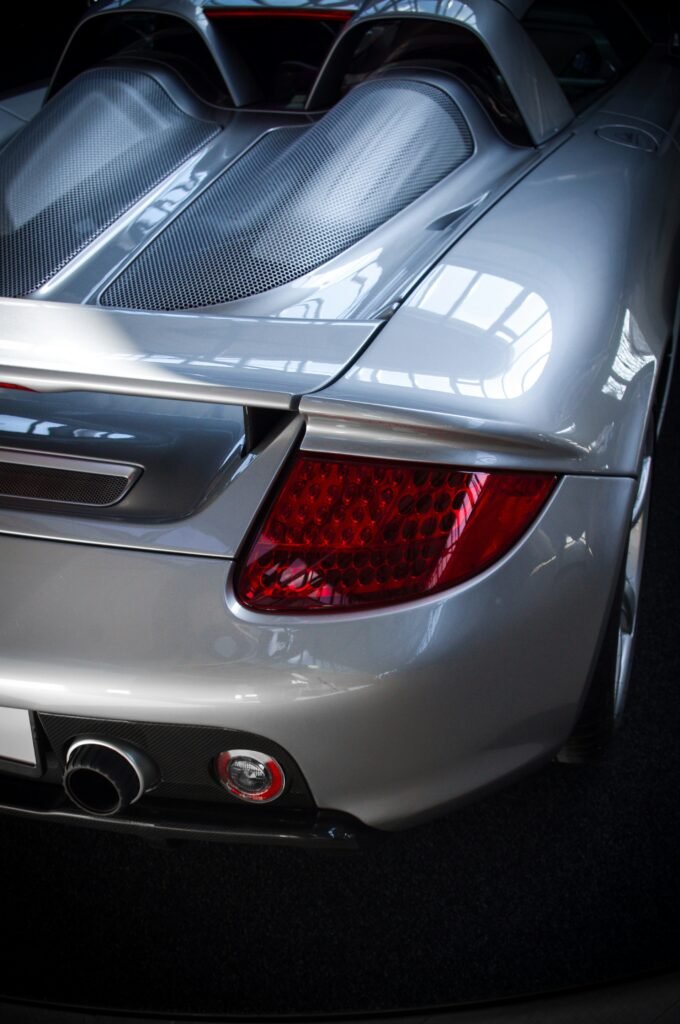
The Porsche Carrera GT design revolves around its carbon fiber monocoque and plastic subframes. Italian firm ATR Composites built the chassis, and they could only finish two per day—talk about exclusivity.
Only the essentials—front rails, A-pillar inserts, a few mounting points—used metal. Everything else was featherweight carbon.
Aerodynamic Features:
- Active rear wing (pops up at 75 mph)
- Carbon undertray for ground effect
- Air ducts and diffuser
- Sculpted wishbones for airflow
At full tilt, it generates 639 pounds of downforce. Most of that comes from the undertray, not the wing—smart, subtle, and effective.
Suspension and Handling Characteristics
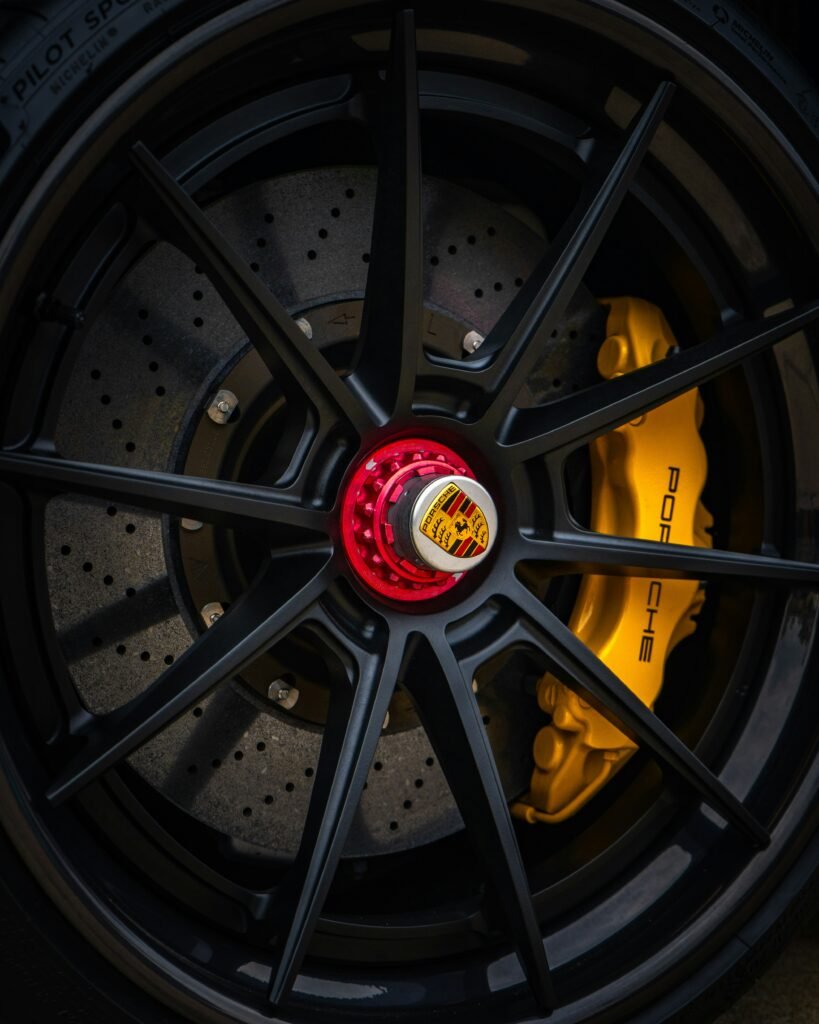
Porsche gave the Carrera GT double wishbone suspension and inboard dampers, straight from the F1 playbook. Pushrods actuate the dampers, just like on a race car.
The Porsche Ceramic Composite Brake (PCCB) system uses 15-inch rotors—huge, light, and brutally effective. The ceramic brakes cut unsprung weight in half compared to steel.
Those forged magnesium wheels? They’re lighter than the tires. Porsche only approved Michelin’s special rubber, with a soft outer third for max grip.
ABS and anti-spin came standard, but you can switch off the traction control. That’s a bold move—one that’s both thrilling and, honestly, a little dangerous if you’re not careful. Why is the Porsche Carrera GT dangerous? It’s all down to that analog setup and the car’s wild, unforgiving nature.
Key Individuals and Design Team
The Porsche Carrera GT story is really a story about people—four visionaries who each left their mark. Roland Kussmaul, Michael Hölscher, Roland Heiler, and Walter Röhrl all brought something unique to the table.
Roland Kussmaul’s Motorsport Influence
Kussmaul led the project, channeling Porsche’s racing spirit into a street car. He fought to keep the car raw, wild, and true to its roots.
His motorsport experience shaped everything—the carbon monocoque, the screaming V10, and that uncompromising manual gearbox.
Kussmaul pushed the team to favor performance over comfort. The result? A car that rewards skill and punishes mistakes, just like a proper race car should.
Michael Hölscher and Technical Leadership
Michael Hölscher took care of the technical headaches. He made sure the V10, originally built for the track, could survive street duty.
He championed the carbon fiber chassis, even when it meant inventing new ways to build it. That decision set a new standard for supercars everywhere.
Hölscher’s team wrestled with cooling, emissions, and reliability. He insisted the car hit 205 mph and still pass global safety regs—no small feat.
His choices made the Carrera GT not just fast, but also robust. That’s part of why it’s now seen as a blue-chip collectible with serious Porsche Carrera GT investment potential.
Roland Heiler’s Design Vision
Chief Designer Roland Heiler shaped the Porsche Carrera GT’s visual identity. He dreamed up a silhouette that’s still jaw-dropping—honestly, the thing just refuses to age.
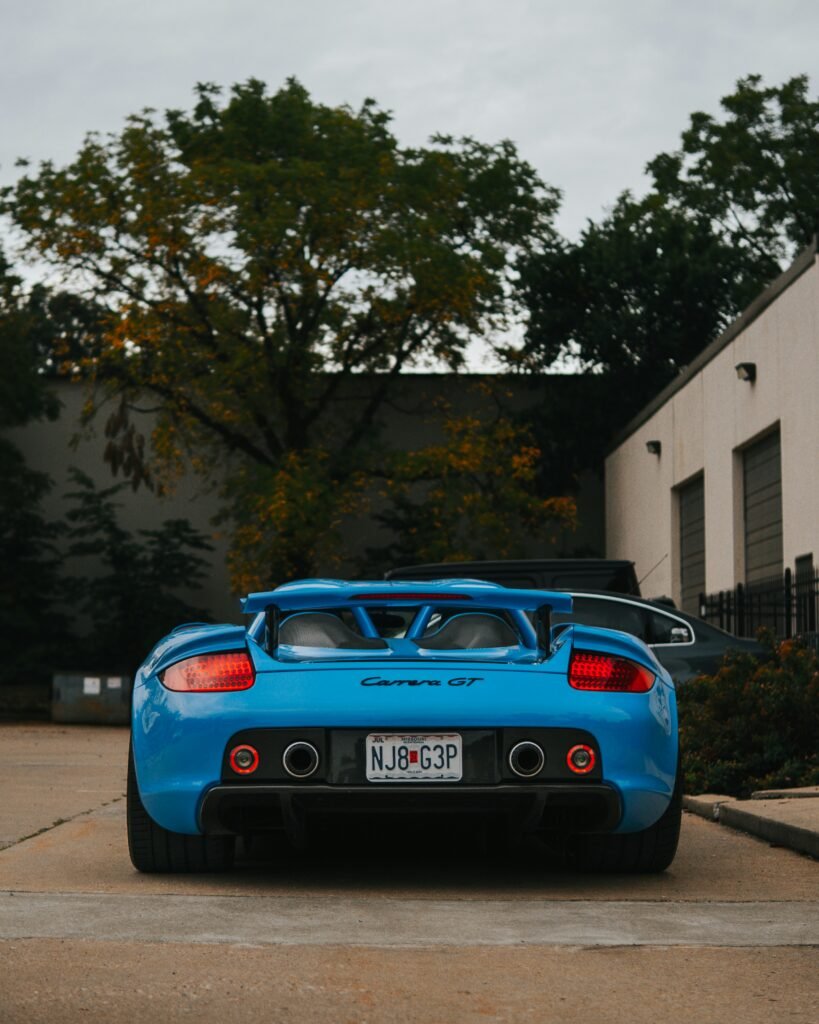
Heiler didn’t just chase beauty for its own sake. He obsessed over every curve and crease, making sure each one sliced through the air with purpose but still whispered “Porsche.”
That low, predatory profile? The gaping air intakes? They’re not just for show. Those details channel air to keep the monstrous V10 cool, and—let’s be real—they make the car look like it’s breaking the speed limit even while parked.
Inside, Heiler kept things spartan. Carbon fiber dominates, and the cockpit feels more like a race car than a luxury lounge. He wanted the driver to focus, not get distracted by unnecessary gadgets.
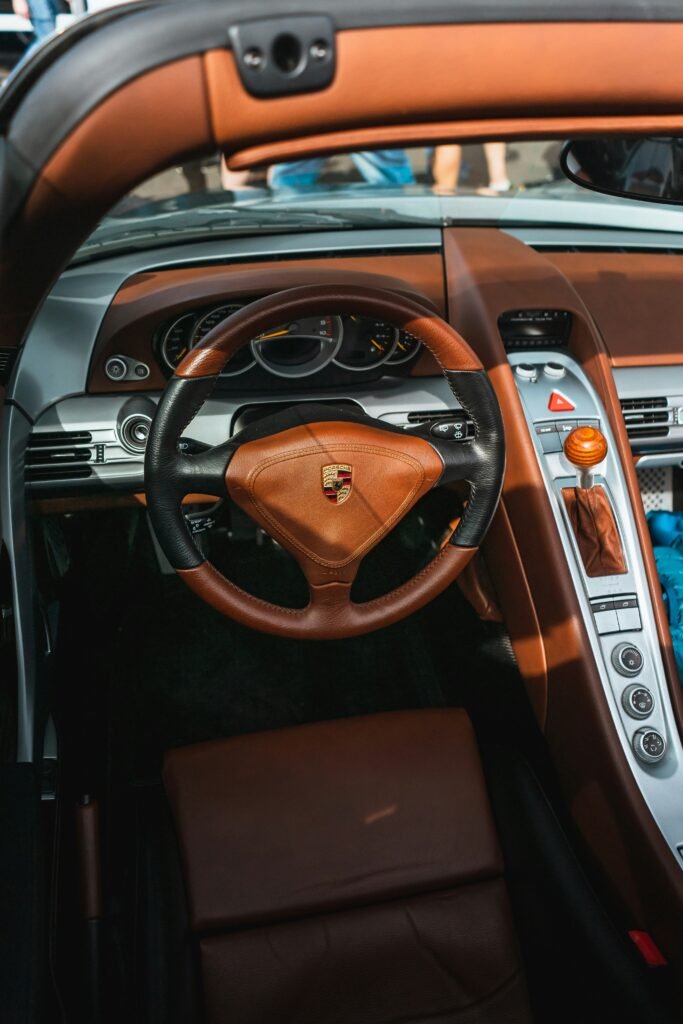
Somehow, he nailed a balance between classic Porsche vibes and futuristic supercar drama. That’s probably why the Carrera GT stands out from its early-2000s rivals—it’s timeless, not trendy.
Walter Röhrl and Driving Dynamics Input
Walter Röhrl, rally legend and Porsche’s go-to test driver, didn’t just sign off on the Carrera GT—he poured his soul into it. Röhrl brought racing experience to the table, and it shows in every corner the car takes.
He fine-tuned the suspension and dialed in the steering, making sure the car felt alive at speed but never twitchy. Röhrl’s fingerprints are all over the way this car communicates with its driver.
He obsessed over the manual gearbox and clutch. If you’ve ever shifted a Carrera GT, you know—there’s nothing quite like it. It’s mechanical, challenging, and deeply rewarding if you get it right.
Röhrl spent hours on track, hunting down any hint of unpredictability. The final setup reflects his belief: the car should reward skill, but never punish the brave.
His name attached to the project? That’s a seal of approval that matters. Enthusiasts still talk about Röhrl’s involvement as a kind of spiritual blessing for the Carrera GT story.
Owner Demographic, Community, and Driving Experience
The Porsche Carrera GT didn’t just attract buyers—it built a cult. Reviews raved about its raw, visceral drive, and soon, owners formed tight-knit circles that cemented its place in automotive history.
Who Buys the Carrera GT
Carrera GT owners? They’re the top of the Porsche pyramid. Even among Porsche’s elite, these folks stand out. Most are high-earning, middle-aged men, but this car drew in the ultra-successful—think entrepreneurs, collectors, and a few racing legends.
With a base price around $440,000, you needed serious cash. Many buyers already owned multiple Porsches, but wanted the ultimate. Some celebrities and race drivers couldn’t resist the call either.
The limited run of 1,270 made it a unicorn. Investors noticed, too, eyeing the Carrera GT as a blue-chip collectible with real investment potential.
Owner Community and Global Fanbase
Carrera GT owners stick together. Online forums buzz with technical talk, maintenance woes, and the occasional humblebrag about epic drives.
Owners meet up at exclusive events and rallies, swapping stories and sometimes getting insider knowledge from the engineers who built their cars.
There’s a real pride in the car’s analog soul. Owners see themselves as keepers of a dying art—driving, not just piloting computers on wheels.
And some folks really use their cars. A few have racked up over 100,000 miles. That’s gutsy, given the car’s value and reputation. Not everyone’s content to let their Carrera GT collect dust in a vault.
Test Drives and Media Reviews
Journalists lost their minds over the Carrera GT’s purity.Road & Track called it “the most authentic supercar of its generation.” And you know what? They weren’t wrong.
Car and Driver couldn’t get enough of the manual gearbox and that ceramic clutch. It’s a car that demands respect—mess up a shift, and you’ll know it. But nail it, and you’ll feel like a hero.
Top Gear loved it too, though they admitted it could be intimidating. That V10 howl? Iconic. Even seasoned pros said it felt more like a race car than anything with plates.
Balance, precision, and rawness—those words come up again and again. It’s not a car for everyone, but for those who get it, it’s magic.
Cultural Significance in Automotive Circles
The Carrera GT marks the end of an era. It’s the last stand before electronics took over supercars—an analog hero in a digital world.
Purists adore it. The manual gearbox, the lack of safety nets—these features make it a legend among those who crave real connection with their machines.
Designers and engineers still talk about its carbon fiber structure and motorsport DNA. It set a new bar for what a Porsche supercar could be.
Today, the Carrera GT sits on a pedestal with icons like the Ferrari F40 and McLaren F1. It’s a monument to uncompromising performance—a kind of beautiful madness that’s nearly impossible to replicate now.
Market Value, Awards, and Competitive Impact
The Porsche Carrera GT has gone from a $440,000 dream to a multi-million dollar legend. Its racing roots and limited run changed the hypercar game and set new standards for what a halo car could be.
Price Evolution and Collector Value
Back in 2003, the Carrera GT hit showrooms at $440,000. Like most exotics, it dipped in value for a bit as the years went by.
But around 2010, something shifted. Collectors started to realise that pure, analogue experiences were disappearing. Prices jumped 87% in just five years.
During the pandemic, the market went wild—some cars sold for $2 million. Lately, things have cooled a bit, but $1.8 million isn’t uncommon at auction.
What Drives the Value?
- Only 1,270 made—true scarcity
- The holy grail: manual gearbox
- The V10 engine’s rarity and drama
- Real racing tech under the skin
America’s appetite for the Carrera GT seems endless. Low-mileage examples? They command eye-watering premiums, especially as collector fever continues.
Lap Records and Prestigious Awards
Sports Car International crowned the Carrera GT the top sports car of the 2000s. They also ranked it eighth on their all-time list.
At the Nürburgring Nordschleife, it clocked a 7:28 lap (unofficial) —blistering for its era. That’s the stuff of legends.
Some Highlights:
- Top dog of the 2000s
- #8 of all time
- Nürburgring lap hero
- Media darling for driving purity
Enthusiast magazines couldn’t get enough of its raw, unfiltered feel. The lack of electronic nannies became a badge of honor.
Pro drivers loved the challenge. If you had the skill, the Carrera GT rewarded you; if not, it didn’t suffer fools.
Contemporary and Notable Competitor Cars
The Ferrari Enzo was the Carrera GT’s main rival. Both dropped in the early 2000s, both aimed at the same rarefied crowd.
Head-to-Head:
| Feature | Carrera GT | Ferrari Enzo |
|---|---|---|
| Power | 603 hp | 651 hp |
| Transmission | 6-speed manual | F1 paddle-shift |
| Price | $440,000 | $660,000 |
| Production | 1,270 units | 399 units |
The McLaren F1 set the template for hypercars, inspiring both Porsche and Ferrari. Pagani Zonda and Koenigsegg joined the party, chasing the same collector and enthusiast crowd.
But the Carrera GT’s manual gearbox set it apart. As paddle-shift transmissions took over, Porsche’s analog approach started to look like genius.
Market Influence on Future Porsche Models
The Carrera GT’s success proved Porsche could play in the hypercar big leagues. Afterward, they made halo cars a regular thing.
The 918 Spyder borrowed the limited-production playbook. Sure, it went hybrid and swapped the V10 for new tech, but the spirit stayed the same.
How the Carrera GT Shaped the 918 Spyder:
- Exclusive numbers
- Sky-high pricing
- Advanced materials everywhere
- Race-bred tech front and center
Porsche’s GT models now use carbon fiber as a matter of course. The Carrera GT showed they could take on Ferrari and win, boosting confidence for future projects.
Collectors proved there’s still a market for analog thrills. Porsche took that lesson to heart with every GT car since.
Ownership Costs and Notable Quotes
Owning a Porsche Carrera GT isn’t for the faint of heart—or wallet. Beyond the sticker shock, maintenance can easily top $50,000 a year. Still, experts and journalists can’t help but gush about the raw, intoxicating drive—even if they admit it’s unforgiving for the unprepared.
Maintenance and Running Expenses
The clutch alone costs around $40,000 to replace. That’s not a typo. The Porsche Ceramic Composite Clutch (PCCC) usually needs changing every 15,000-20,000 miles—assuming you don’t drive like a maniac.
Insurance? Expect $15,000 to $25,000 a year, thanks to current market values hovering between $1.5 and $3 million. Full coverage is a must, especially if you want to sleep at night.
Routine service isn’t cheap either. Only a handful of techs know the V10’s quirks, and annual maintenance runs $8,000-$12,000. Need new carbon-ceramic brakes? That’s $15,000—at least.
Then there’s storage. Most owners spring for climate-controlled garages and use enclosed trailers for events. If you want to keep your Carrera GT pristine, there’s no skimping here.
Insights From Designers and Automotive Journalists
Jeremy Clarkson once called the Porsche Carrera GT “possibly the best supercar ever made”. But, he didn’t shy away from the car’s wild side, warning it’s “also terrifying” and “waiting to kill you” if you lose focus for even a second.
Chris Harris shared a similar sentiment, saying the Carrera GT “punishes you for being clumsy but rewards you like nothing else when you get it right.” That V10 engine? He loved how it could “sing to 8,400 rpm with a scream unlike any other road car.”
Doug DeMuro couldn’t get enough of the car’s analogue soul. He described it as “raw, unfiltered, and uncompromising”, pointing out it has “no electronic aids to save you,” and yet he bought one, what a legend.
He even called the Porsche Carrera GT “one of the last truly great driver’s cars.” Honestly, can you blame him?
Andy Wallace, a Le Mans champ and Bugatti test driver, didn’t hold back either. He said it’s “one of the most exciting road cars I’ve ever driven”, and that there are “no filters between you and the road.”
Final Words
The Porsche Carrera GT isn’t just a supercar—it’s a symphony of danger, beauty, and engineering brilliance. It represents an era when cars weren’t tamed by software, but by courage and skill. For collectors, it’s more than metal and carbon fiber—it’s an heirloom of adrenaline and artistry. Whether you see it as a wild beast or a blue-chip investment, one thing is certain: the Carrera GT will never be forgotten.
Thanks for reading! If you enjoyed this deep dive, be sure to subscribe to my email list for exclusive car reviews, insider tips, and weekly special offers on car parts, auctions, and gear — perfect for any car enthusiast.
If you have any thoughts or experiences with this car? Leave a comment below — I love hearing your opinions and sparking conversations with fellow enthusiasts.
And don’t forget to read related posts for more great content!

